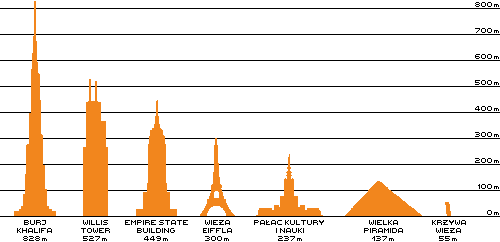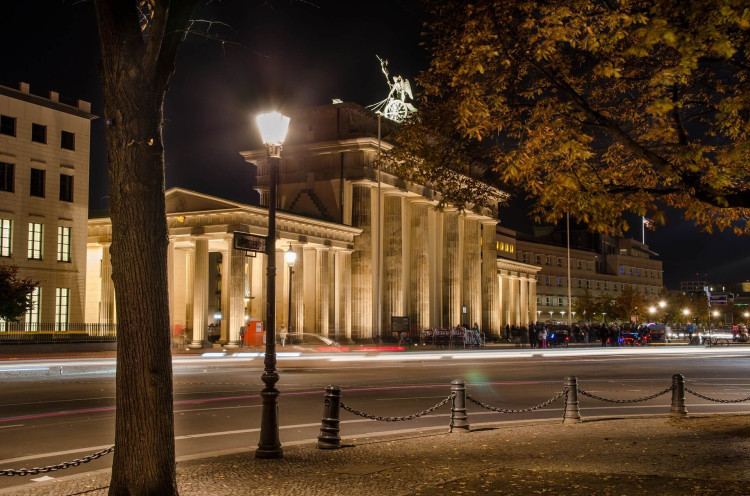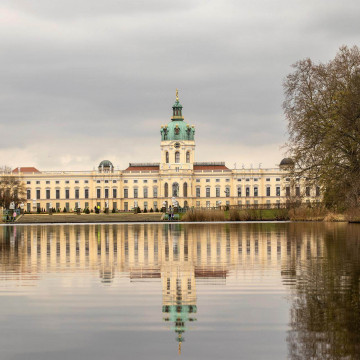Brandenburg Gate in Berlin (Germany) - famous attraction in Berlin
Where is located Brandenburg Gate?
Address of Brandenburg Gate is Pariser Platz, 10117 Berlin, Germany
show on map
When was built Brandenburg Gate?
Built date of Brandenburg Gate is 1788-1791

Facts, informations and history of Brandenburg Gate
The gate is one of the most recognizable monuments in Berlin. The German designer Carl Gotthard Langhans (one of the leading representatives of the early Classicist movement) was responsible for its design.
The inspiration of the Brandenburg Gate was Propyleje, or the huge gate of Athens Acropolis .
The Brandenburg Gate measures 26 meters high, 65.5 meters wide and 11 meters deep. It was used by the Łabski sandstone, obtained from the vicinity of Lwówek Śląski.
The gate is equipped with five separate passes, of which the middle is distinguished by the largest width. Once only ordinary passes were available for ordinary citizens, while the three middle were only for use by the royal family and high-ranking officials.
The front and rear facade of the gate is decorated with 15-meter columns designed in the Doric style with Ionic grooving. The attic of the building and the pillars dividing the rides are decorated with bas-reliefs depicting figures from Greek mythology (including Hercules).
There are annexes on both sides of the gate. In their interior are placed statues of the god Mars and the goddess Minerva. During the Second World War, their destruction took place, and these contemporary adorning copies are their copies made in the years 1951-1952 by the sculptural team of Kranold.
At the top of the Brandenburg Gate, a 5-meter sculpture of the winged goddess Victoria, who drives the quadriga (antique, Roman two-wheeled car drawn by four horses) made by a German sculptor, rests on top of the Brandenburg Gate and painter Johann Gottfried Schadow.
Napoleon liked the figure of the quadrifle placed on the top, that after winning the battle at Jena-Auerstedt in 1806, he decided to take her to Paris. The sculpture returned to Berlin after 8 years.
At present, cars cannot be driven under the building as their exhaust fumes could have a harmful effect on the sandstone from which it is made. For a dozen or so years now, there has been a proposal to allow for driving under special circumstances, or for example for newlyweds.
After the Second World War, when Berlin was divided into parts controlled by the Soviet Union and the US, the monument was on "no man's land" and in the years 1961-1989 none of them the parties to the conflict did not have access to it. It was not until 1989, just after the reunification of Berlin and Germany, that the gate was reopened.
In the years 2000-2002 a major renovation of the monument was made, the cost of the work was 6 million Euro.
Interestingly, the Brandenburg Gate appears on German 10, 20 and 50 eurocent coins as a symbol of the reunification of the German state after the Cold War.
Architect of Brandenburg Gate

How many meters have Brandenburg Gate?
Height of Brandenburg Gate is 26 meters


Construction/building type
Building Brandenburg Gate is of type Gate
Architectural style
Architectural style of Brandenburg Gate is Classicism
Classicism is an architectural style that originated in Europe in the 18th century and lasted until the end of the 19th century. Its name is derived from the Greek word 'klasis', meaning 'classic', which means perfection and perfect model. In classicism, adherence to the principles of proportion and harmony is paramount, which is evident in the simple and regular forms of buildings. ... czytaj więcej.
Other dimensions, parameters and frequently asked questions

How many meters have Brandenburg Gate?
Brandenburg Gate have length 65.5 meters wide
What material is the building made of?
Brandenburg Gate is made of the following materials: Swallow sandstone
Other names
The building is also known by other common names or in the original language, i.e. Brama Pokoju, Brandenburger Tor (niem.)
Photo gallery Add photo
Location on map / How to get there




























Comments to Brandenburg Gate (3) Average rating: 4,0 Add comment / Rate building
Based on 3 comments